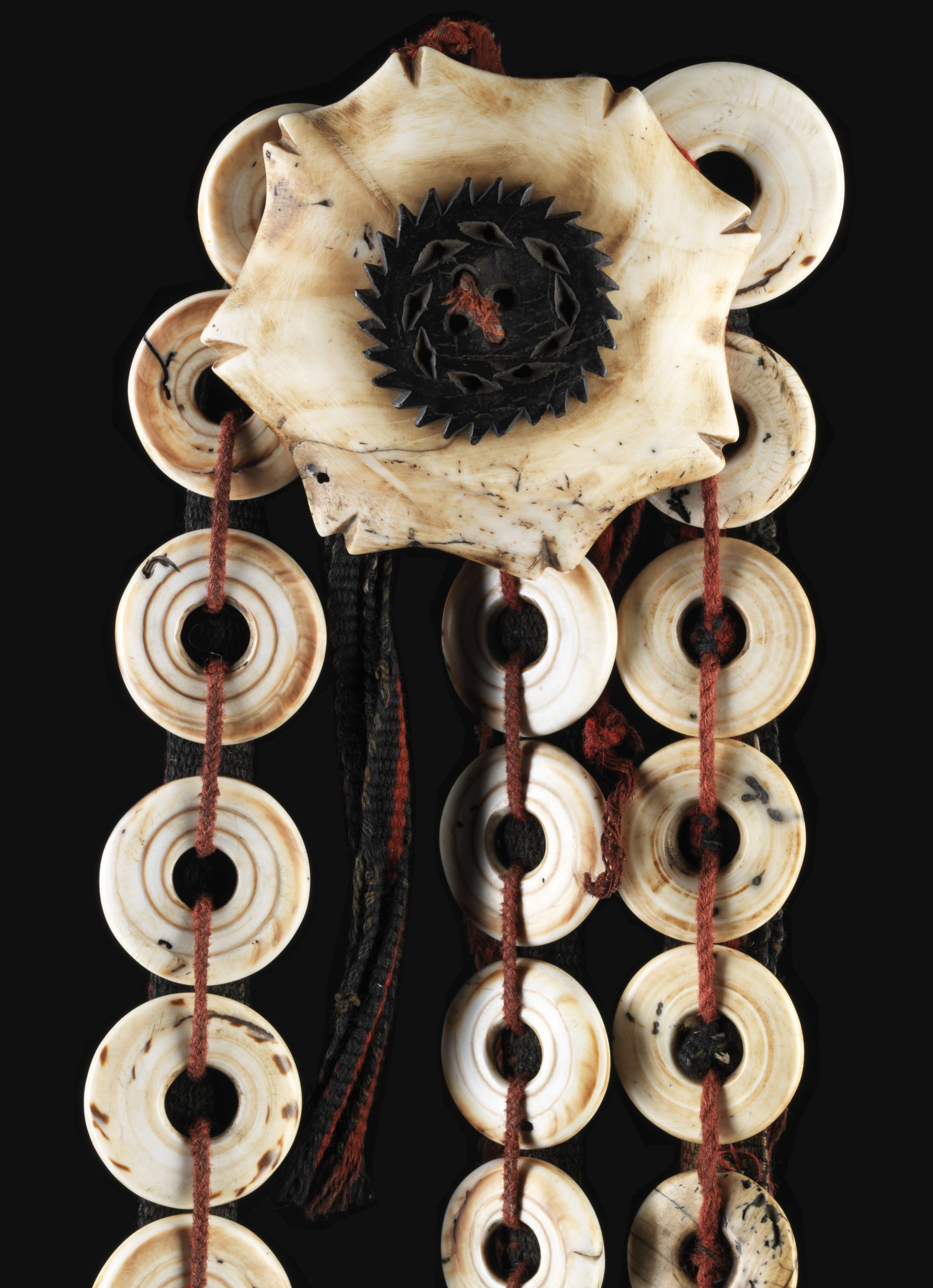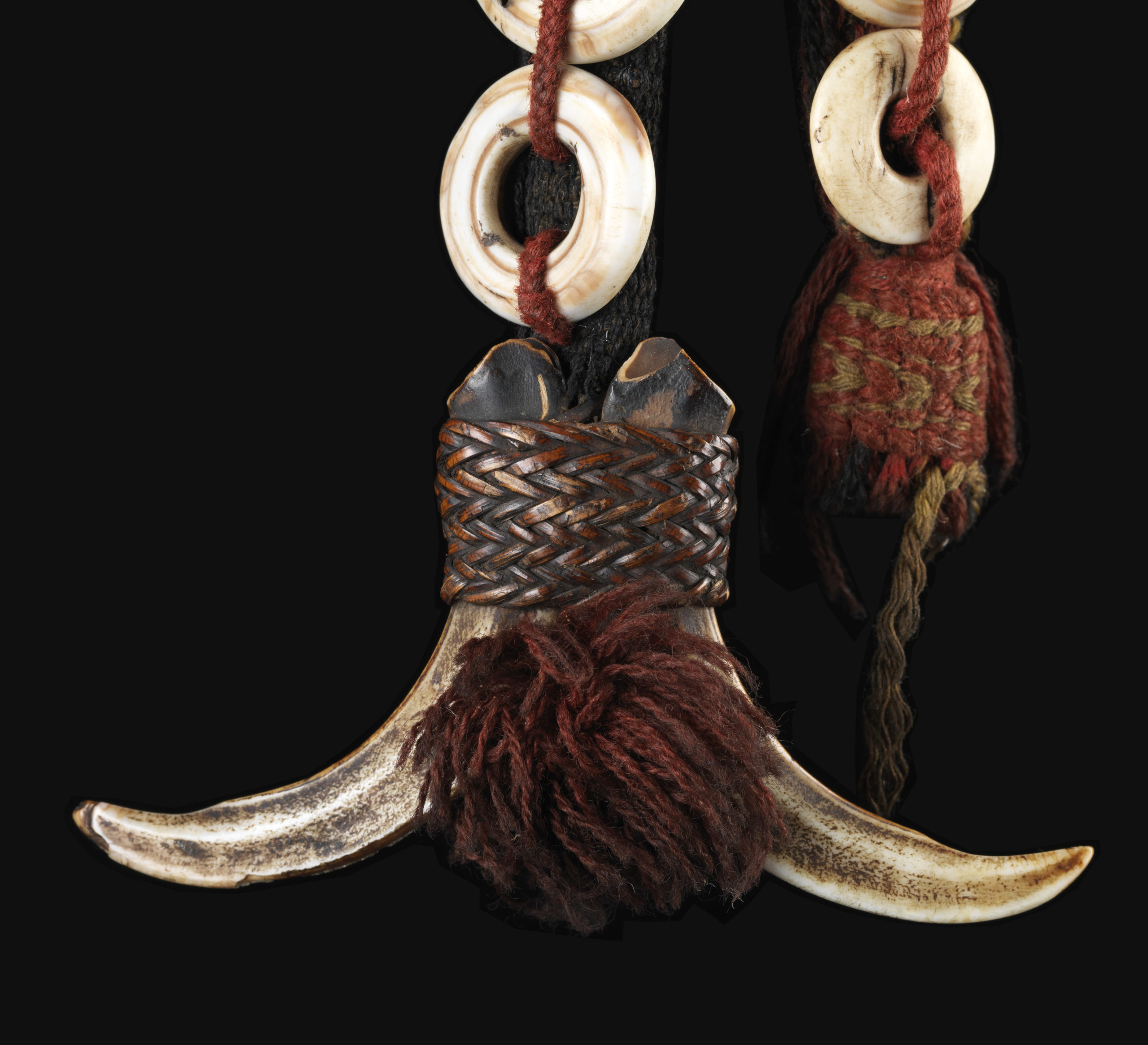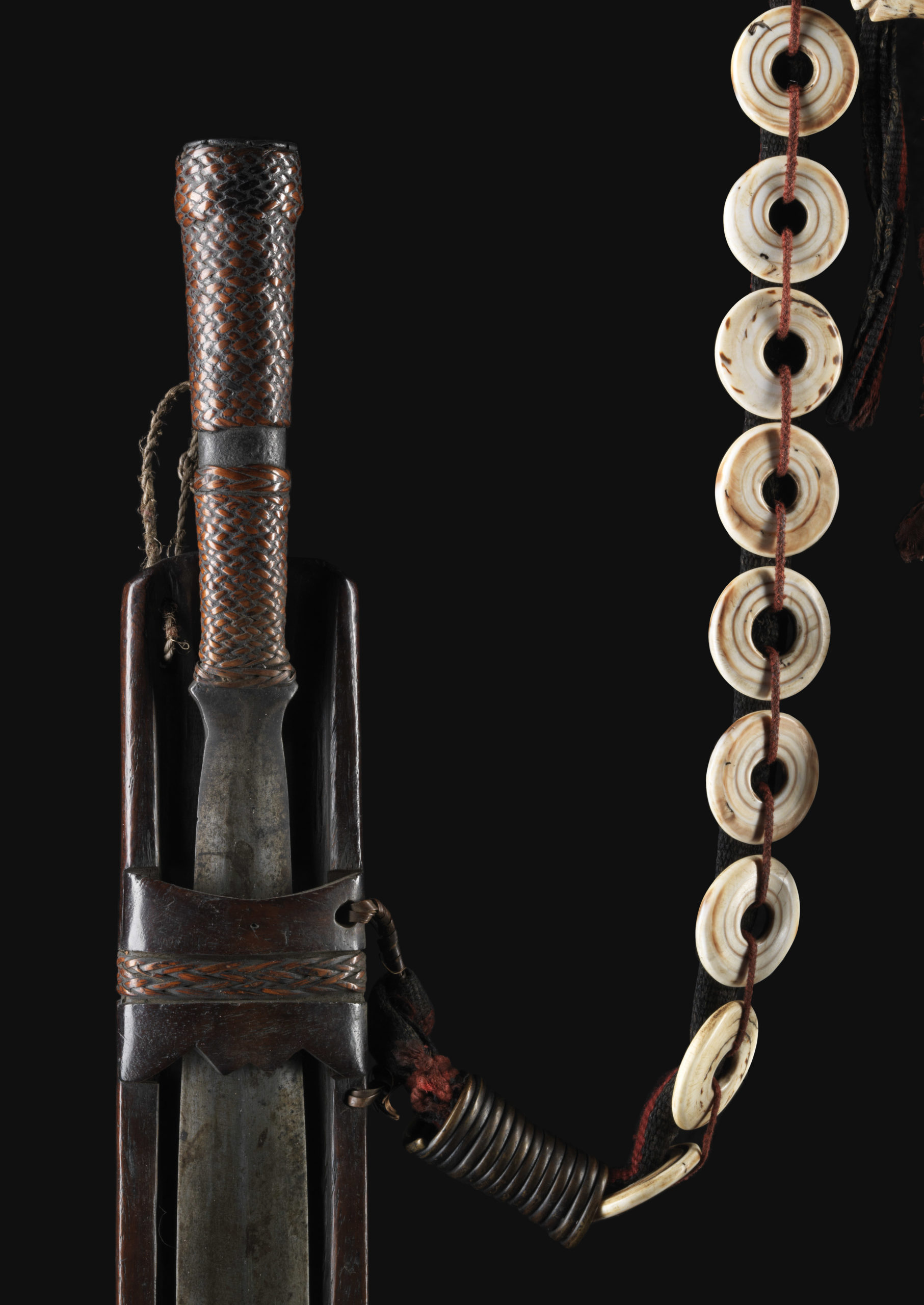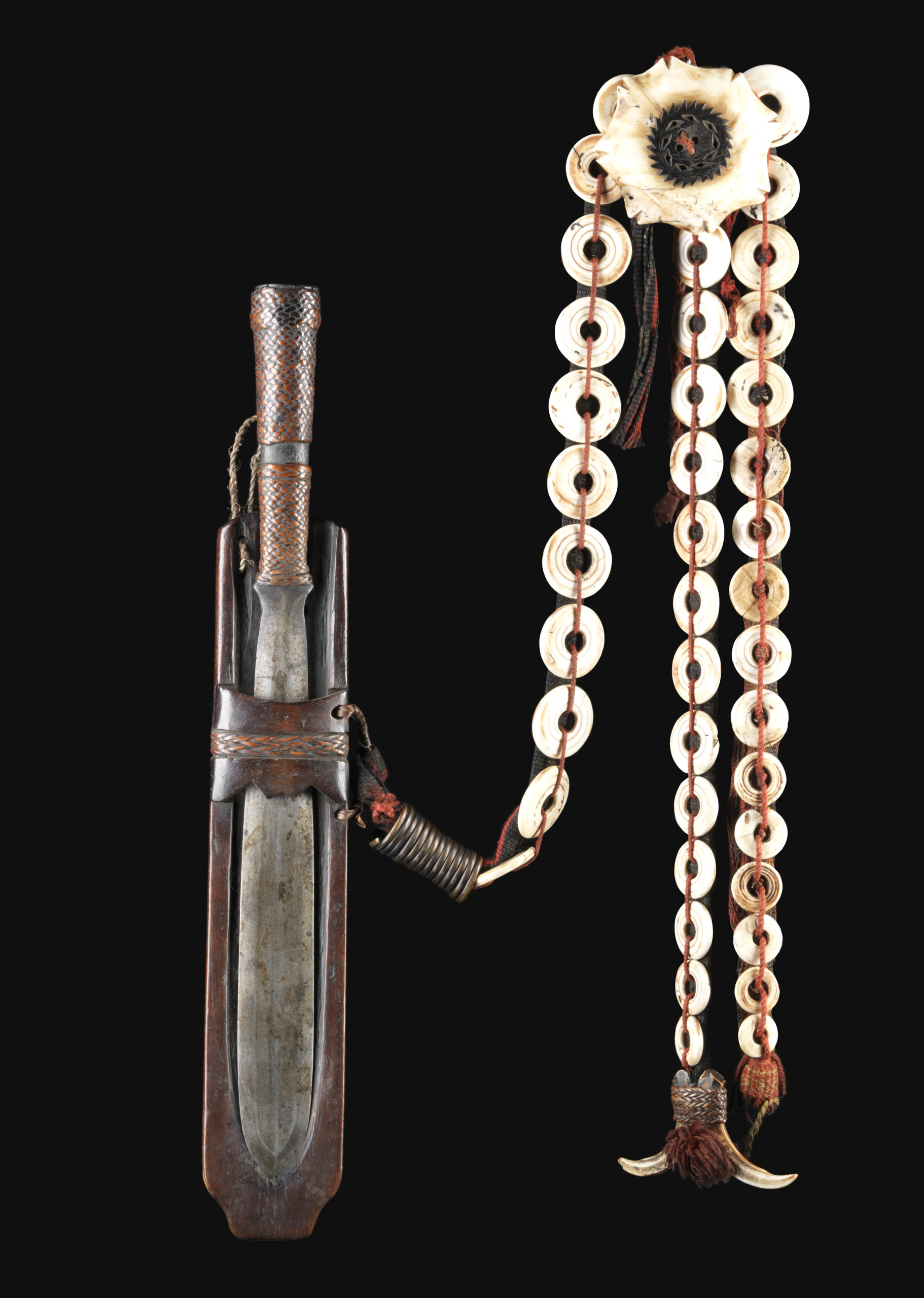Ginutto
The Igorot have very specific bolo, which they wear on special occasions on a very special carrying device, namely bolo belts with perforated discs from the caps of the giant clam Tridacna giga, which is particularly precious in the mountains. Round shell discs with a hole in the middle are sewn onto strong textile or rattan bands. These are then looped around the waist and closed with a hook closure. The bolo sheath is then hung on this belt with a rattan or textile cord. Sometimes an additional shorter band is also sewn onto the belt band, also provided with shell discs, which then also falls to the knees of the wearer. The rattan ribbons are made of braided bast, the textile ribbons consist of folded or sewn together pieces of hand-woven or bought pieces of fabric. Sometimes you can also find uniform fabric of the American army or even a canvas belt as a base for the shell discs. The shell discs are cut from cone shells and the Tridakna giga, polished smooth and rounded at the edges; they are round or nearly round. Mostly they are of the same size, in the more precious pieces the diameter increases from the beginning of a band to the end. Their diameter is about two to eight cm. The perforated shell discs are threaded onto the textile carrier with a double or single rattan strip. The rattan “yarn” runs out of the textile carrier, runs over the edge of the mussel disc through the hole in the middle through the textile carrier and threads the mussel discs on, leaves the textile at another place, runs over the next edge of the mussel disc and so on. Some belts have up to 32 of these precious discs. The ends of the carrying straps are often finished in a plait shape with rattan stripes or a tuft of yarn in red dyed yarn.
On particularly valuable belts, a large Tridacna giga mussel disc of 8.0 to 10.0 cm diameter is often sewn onto the buckle like a large two-hole button. This is round or star-shaped with single or double rays and has a flat, sewn-on tortoise shell ornament of about 5 cm diameter. This is called the sun symbol ginuktu, sometimes the whole tridakna disc with tortoiseshell ornament is called ginuktu. In literature also the complete tridakna disc belt with or without a special sun disc is called ginuktu, but the belt buckle is called upud.
| Objekt |
Hand knife, “bolo”, “pinahia”, “pika“ |
| Kultur | Northern Philippines, Luzon, Bontoc or Kalinga |
| Zeit | 19th century, beginning of the 20th century |
| Maße | Length bolo 48,5 cm |
| Material | Wood, rattan, steel, brass, textile, shell, teeth |







